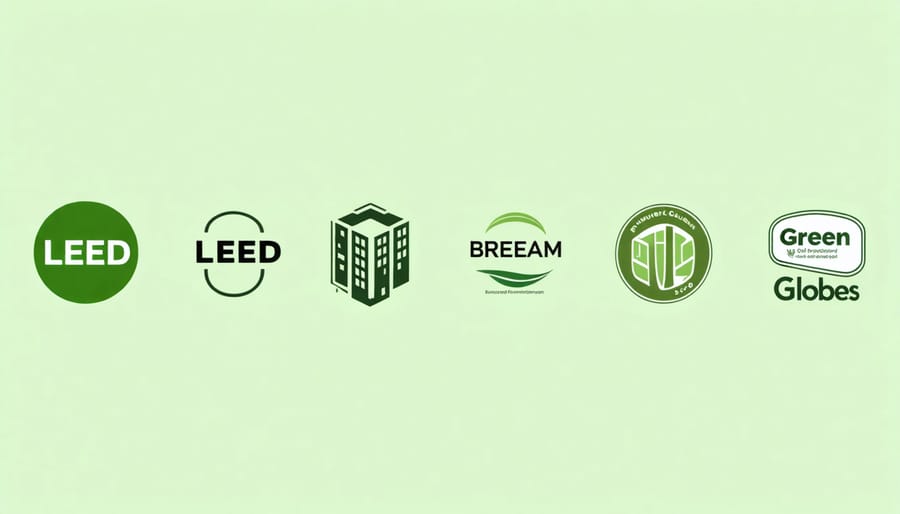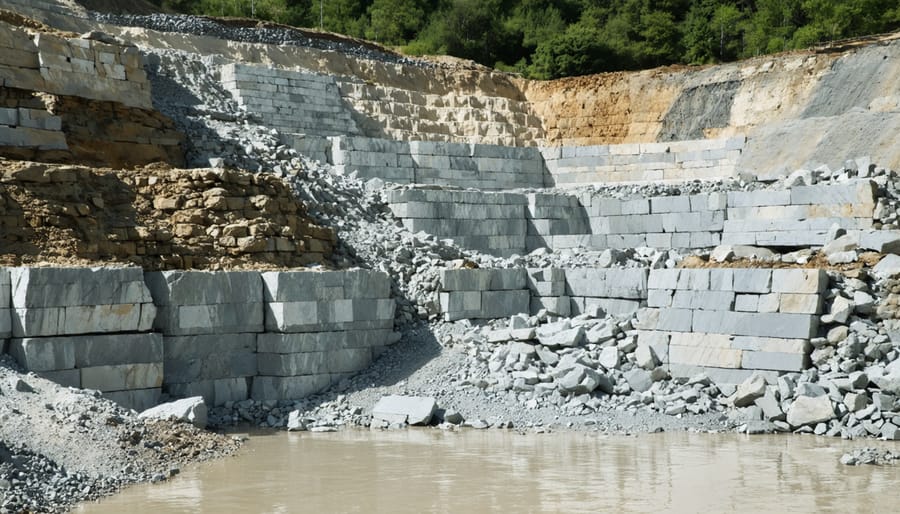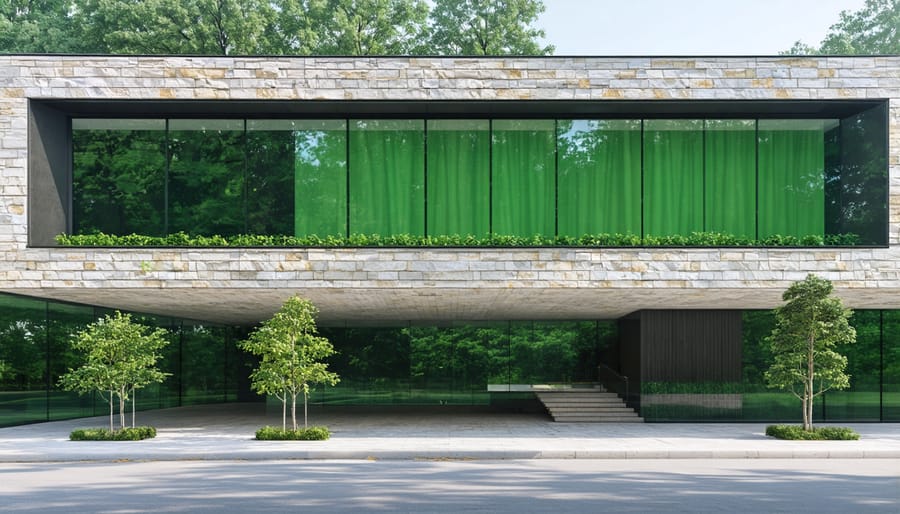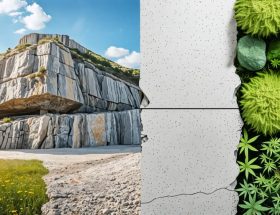Green building certification has emerged as a cornerstone of sustainable architecture, transforming how we design, construct, and operate modern buildings. In an era where environmental responsibility meets architectural innovation, building greener with natural stone and other sustainable materials has become essential for achieving prestigious certifications like LEED, BREEAM, and Living Building Challenge.
These certification systems represent more than just environmental badges—they’re comprehensive frameworks that validate a building’s commitment to sustainability, energy efficiency, and occupant wellbeing. From reduced operational costs and enhanced property values to improved indoor air quality and decreased carbon footprint, certified green buildings deliver measurable benefits that resonate with stakeholders across the construction industry.
As architects, developers, and building professionals increasingly prioritize sustainable design, understanding green building certification has become crucial for staying competitive in today’s market. These programs provide clear, actionable metrics for creating structures that not only minimize environmental impact but also optimize performance and create healthier spaces for occupants.
Understanding Green Building Certifications

LEED Certification
LEED (Leadership in Energy and Environmental Design) certification is the most widely recognized green building rating system worldwide. Projects earn points across several categories, including sustainable sites, water efficiency, energy performance, materials and resources, and indoor environmental quality. Natural stone can contribute significantly to achieving LEED credits in multiple categories.
In the Materials and Resources category, natural stone can earn points through several pathways. Local sourcing credits are available when stone is extracted and manufactured within 500 miles of the project site. Building reuse credits can be achieved when incorporating existing stone elements, while material reuse credits apply when salvaged stone is utilized in new construction.
The environmental attributes of natural stone align with LEED’s focus on sustainable materials. Stone’s durability and longevity contribute to building life-cycle impact reduction credits. Many stone products contain recycled content and can be recycled at the end of their use, supporting circular economy principles valued by LEED.
Natural stone also supports credits in the Indoor Environmental Quality category. As a natural material, stone emits no volatile organic compounds (VOCs), helping projects meet low-emitting materials requirements. Additionally, stone’s thermal mass properties can contribute to energy performance credits by reducing heating and cooling loads.
Documentation is crucial for LEED certification. Manufacturers must provide environmental product declarations (EPDs), material ingredient reports, and sourcing information to support credit documentation.
Other Major Certification Programs
BREEAM, established in 1990 by the UK’s Building Research Establishment, stands as the world’s first green building certification system. This program evaluates buildings across categories including energy, water, materials, and waste management, with widespread adoption throughout Europe and international markets.
Green Globes offers a streamlined alternative to LEED, featuring an online assessment protocol and interactive guidance. This system emphasizes practical sustainability measures and provides a more flexible, cost-effective approach to green building certification.
The Living Building Challenge represents the most rigorous certification standard, requiring buildings to be net-zero energy, water, and waste. This program’s unique “petals” framework includes place, water, energy, health, materials, equity, and beauty, pushing the boundaries of sustainable construction and innovative design solutions.
Natural Stone’s Environmental Benefits
Durability and Longevity
Natural stone stands out as one of the most durable building materials available, with a documented lifespan that can exceed several centuries. This exceptional longevity directly contributes to the environmental benefits of natural stone, as it significantly reduces the need for replacement materials and minimizes construction waste over time. Unlike manufactured materials that may require replacement every few decades, stone installations in historical buildings have proven their ability to maintain structural integrity and aesthetic appeal for generations.
The minimal maintenance requirements of natural stone further enhance its sustainability profile. When properly installed and sealed, stone surfaces resist weathering, UV exposure, and chemical degradation. This resilience translates to reduced maintenance costs and fewer resources spent on repairs or replacements throughout the building’s lifecycle. Additionally, stone’s thermal mass properties help regulate indoor temperatures, potentially extending the lifespan of HVAC systems and reducing long-term energy consumption.
Notably, natural stone can be repurposed or recycled at the end of a building’s life, making it a truly sustainable choice for green certification projects.

Low Environmental Impact
Natural stone stands out in green building for its remarkably low environmental impact throughout its lifecycle. Unlike manufactured materials, stone requires minimal processing to transform it from quarry to construction site. The primary processes involve extraction and cutting, which consume significantly less energy compared to the production of concrete, steel, or synthetic materials.
The ability to source stone locally further reduces its environmental footprint. Many regions have active quarries, allowing builders to obtain materials within a 500-mile radius of their construction sites – a key criterion for many green building certifications. This local sourcing drastically reduces transportation emissions and supports regional economies.
Stone’s processing simplicity is particularly evident in its finishing requirements. Many applications use stone in its natural state or with minimal finishing, eliminating the need for chemical treatments or energy-intensive manufacturing processes. When finishing is required, modern technologies have made these processes increasingly efficient, using less water and energy than ever before.
Another significant environmental advantage is stone’s durability and low maintenance needs. Unlike materials that require regular replacement or chemical cleaning, stone can last centuries with basic care. This longevity translates to fewer replacement cycles and reduced environmental impact over a building’s lifetime.
Stone quarries also demonstrate environmental responsibility through modern extraction techniques and comprehensive quarry rehabilitation programs. Many quarrying operations now implement sophisticated water recycling systems, minimize waste through precise cutting technologies, and restore quarry sites to productive use after extraction, often creating new habitats for local wildlife or recreational areas for communities.
Earning Certification Points with Natural Stone
Material and Resource Credits
Natural stone contributes significantly to green building certifications through material sourcing and waste reduction strategies. Local stone sourcing can earn regional materials credits, typically when extracted and manufactured within 500 miles of the project site. This reduces transportation emissions and supports local economies.
Stone’s durability and longevity contribute to building life-cycle assessment credits. With proper maintenance, natural stone can last centuries, eliminating the need for frequent replacements and reducing overall material consumption. Many quarries now implement sustainable practices, offering documentation for responsible extraction methods that satisfy certification requirements.
Waste reduction credits can be achieved through efficient cutting and fabrication processes. Modern technology allows for precise cutting that maximizes material usage and minimizes waste. Leftover stone can be repurposed for smaller architectural elements or crushed for use in aggregate, contributing to construction waste management credits.
Additionally, stone often contains recycled content and can be salvaged from existing buildings, qualifying for recycled materials credits. Many manufacturers now provide environmental product declarations (EPDs) and material transparency documentation, essential for achieving various certification points in systems like LEED, BREEAM, and Living Building Challenge.
Indoor Environmental Quality
Natural stone plays a crucial role in creating healthy indoor environments, contributing significantly to green building certification requirements. The material’s inherent properties make it an excellent choice for maintaining superior indoor air quality, as it emits zero volatile organic compounds (VOCs) and doesn’t off-gas harmful chemicals commonly found in synthetic materials.
Stone’s density and non-porous nature prevent the growth of mold and bacteria, making it particularly valuable in spaces where hygiene is paramount. This characteristic also makes stone easier to clean without harsh chemicals, further supporting healthy indoor environments. The material’s thermal mass properties help regulate indoor temperature and humidity levels, creating more comfortable living and working spaces while reducing the load on HVAC systems.
Additionally, natural stone’s durability means it doesn’t need to be replaced as frequently as other materials, minimizing renovation-related air quality issues over a building’s lifetime. Many certification programs award points for using materials that don’t require frequent replacement or refinishing with chemical treatments.
Stone’s versatility in design allows for creative daylighting solutions, such as light-colored stone surfaces that reflect natural light deeper into interior spaces. This feature not only reduces artificial lighting needs but also contributes to occupant well-being through increased exposure to natural light. When properly specified and installed, natural stone supports acoustic comfort by helping to reduce noise transmission between spaces.

Case Studies in Green Certified Stone Projects
Several landmark projects demonstrate how natural stone contributes to achieving prestigious green building certifications. The California Academy of Sciences in San Francisco, which earned LEED Platinum certification, showcases locally-sourced sandstone throughout its exterior and interior spaces. The building’s stone elements contribute to thermal mass regulation and reduce energy consumption while creating sustainable stone structures that will endure for generations.
The Bank of America Tower in New York City, another LEED Platinum recipient, incorporates regional granite and limestone in its construction. These materials were selected for their durability and minimal maintenance requirements, helping the building achieve high scores in materials and resources credits.
The Bullitt Center in Seattle, often called the world’s greenest commercial building, utilizes local stone in its foundation and landscaping. The project team carefully documented the stone’s chain of custody and transportation distances to meet Living Building Challenge requirements.
In Europe, the Edge building in Amsterdam achieved the highest BREEAM sustainability score ever recorded. Its innovative use of stone flooring contributes to the building’s thermal mass strategy, while recycled stone elements demonstrate creative material reuse.
These projects highlight how natural stone can help achieve multiple certification credits through:
– Regional material sourcing
– Durability and longevity
– Low maintenance requirements
– Thermal mass benefits
– Material reuse potential
– Zero VOC emissions
Each case study demonstrates that natural stone remains a crucial element in creating high-performance, environmentally responsible buildings that meet today’s most stringent green certification standards.
Natural stone stands as a cornerstone of sustainable building practices, offering both timeless beauty and significant environmental benefits. Throughout this exploration of green certification building, we’ve seen how natural stone contributes to LEED, BREEAM, and other certification systems through its durability, low maintenance requirements, and thermal properties. The material’s local sourcing potential, recyclability, and minimal processing needs make it an exemplary choice for environmentally conscious construction projects.
By choosing certified sustainable stone and working with responsible suppliers, project teams can maximize their green building credits while creating spaces that will endure for generations. The industry’s commitment to transparency through environmental product declarations and sustainable quarrying practices continues to strengthen stone’s position in green building.
As we look to the future of sustainable construction, natural stone’s role becomes increasingly vital. Its inherent characteristics align perfectly with the principles of environmental stewardship and responsible building practices. We encourage architects, designers, and building professionals to consider natural stone as a primary material choice in their pursuit of green building certifications, knowing they’re selecting a material that supports both environmental goals and exceptional design outcomes.










